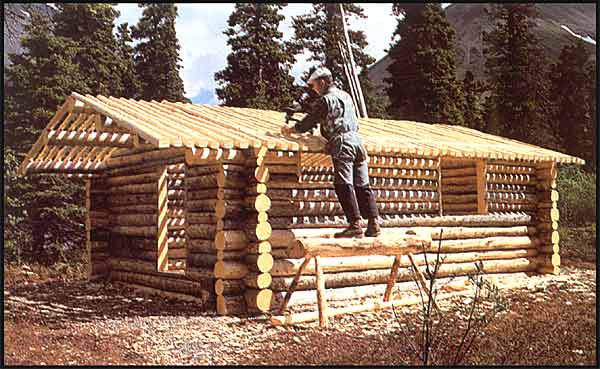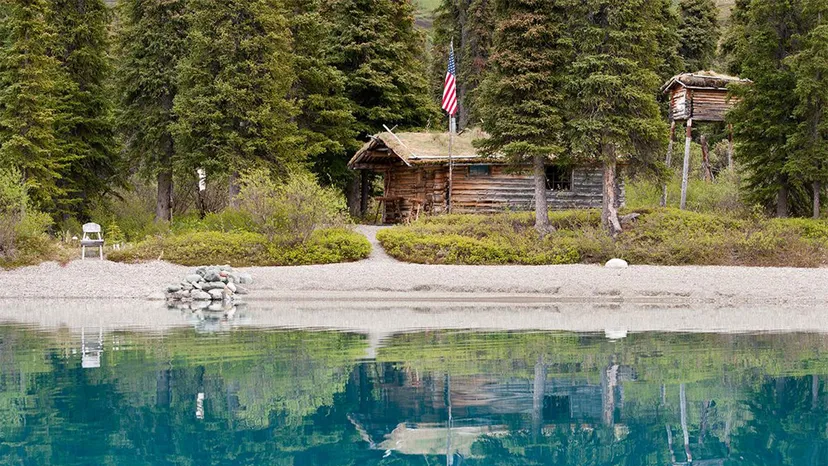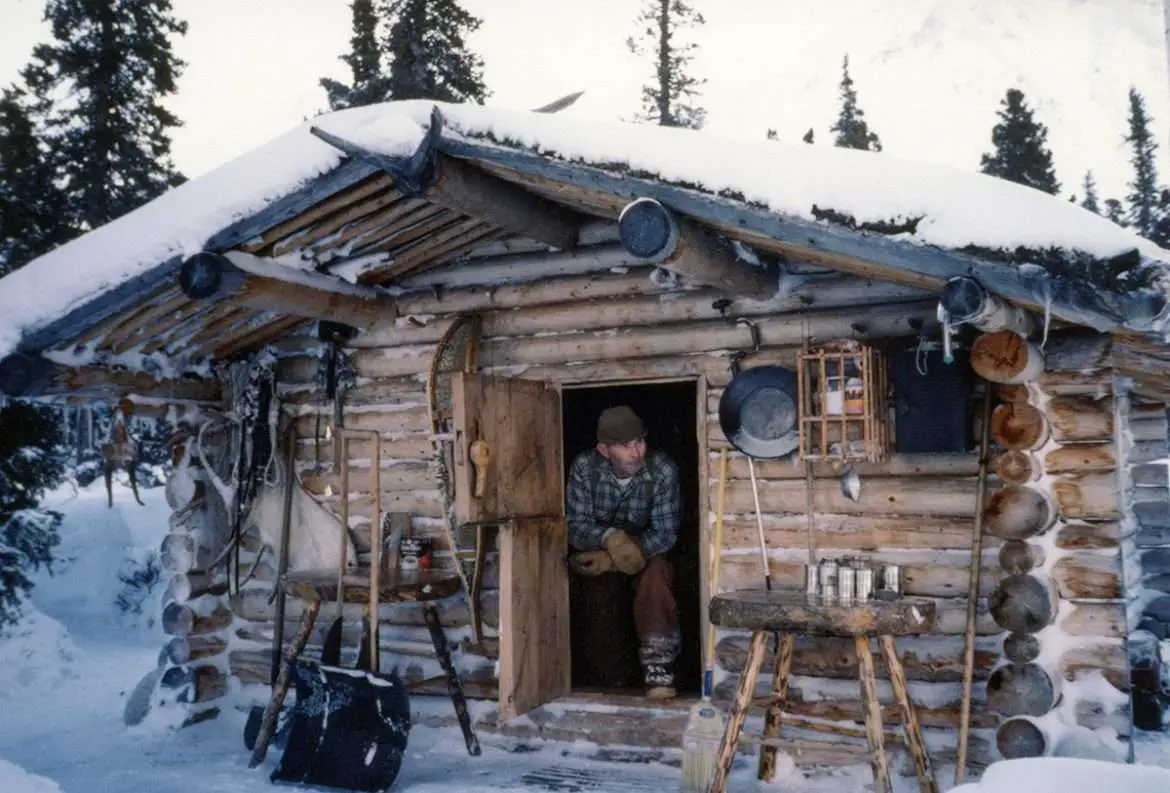Table of Contents
Henry David Thoreau rose to prominence in the mid-nineteenth century after secluding himself for two years in a small hut on Walden Pond. A century later, a man named Richard “Dick” Proenneke pushed the same concept to its logical conclusion by settling in the frigid wilds of Alaska and living alone for 30 years. He became a symbol of survivalist grit and conservationism as a result of his efforts. His home, which he built from the ground up, is now listed on the National Register of Historic Places.
So, how did he get there in the first place? Proenneke (pronounced “prin-ecky”) was born in Iowa in 1916 and grew up during the Great Depression, which shaped his sense of extreme frugality. He joined the US Navy the day after Japan attacked Pearl Harbor in 1941. He signed on as a carpenter’s apprentice, for example.
He was medically discharged from the army in 1945 after contracting rheumatic disease and being bedridden for half a year. He studied to become a diesel mechanic after the war and dabbled in sheep farming in Oregon.
But it was a trip to Alaska to visit a Navy pal that gave him the wilderness bug, which he couldn’t shake. He eventually worked as a heavy equipment operator at the naval facility on Alaska’s Kodiak Island. Proenneke came across the current Lake Clark National Park and Preserve in 1962, around 120 miles (193 kilometers) southwest of Anchorage. Proenneke was moved by its untamed beauty.
Megan Richotte, the park’s program manager for interpretation, partnerships, and public relations, writes: “Twin Lakes is a beautiful, glacially sculpted collection of lakes tucked against the craggy Neacola Mountains of the Alaska Range.” “The adjacent open boreal forest provides ready firewood and building materials, as well as excellent hiking.” Proenneke thought the land was ideal for settling.
Building His House

He began building a small (12-by-16 foot or 4-by-5 meter) retirement cottage in 1968, at the age of 52, with only simple tools, primarily local materials, and his creative carpentry abilities, using only simple tools, mostly local materials, and his ingenious carpentry skills. He cut down spruce trees, carried them by hand, and built a gable roof with moss and sod on top. He used local beach stones to construct a tall chimney.
Proenneke also built a storage building that doubled as an outhouse, although he rarely used it because he disliked the thought of excavating latrines over and over again. Instead, he spent much of his time in the woods, freeing up space in the pit for his visitors.
He used a 16mm movie camera set on a tripod to document much of the construction process. He also photographed a lot of the local fauna along the route.
Of course, he didn’t have access to the internet in his cabin. There was no electricity, running water, or an emergency phone. Proenneke had to rely on local acquaintances to fly supplies in every few weeks or so. For months at a time, that was often his only human interaction.
“I have found that some of the simplest things have given me the most pleasure. They didn’t cost me a lot of money either. They just worked on my senses. Did you ever pick very large blueberries after a summer rain, walk through a grove of cottonwoods, open like a park, and see the blue sky beyond the shimmering gold of the leaves? Pull on dry woolen socks after you’ve peeled off the wet ones? Come in out of the subzero and shiver yourself warm in front of a wood fire? The world is full of such things.”
— Dick Proenneke
In the Wilderness Alone
Many people would be exhausted if they were alone for such lengthy periods of time. Because the cabin is located on the southern edge of the lake, the low winter sun does not strike the cabin for months at a time, adds Richotte. “The long time of darkness, plus the terrible cold and never-ending snow, are enough to make some Alaskans sad and worried.”
Proenneke, on the other hand, seemed to thrive in this environment. Alan Bennett, a wildlife and fisheries biologist in the Lake Clark area who knew Proenneke personally and later worked as a volunteer guide at his now-famous cabin, was a wildlife and fisheries biologist in the Lake Clark area who knew Proenneke personally and later worked as a volunteer guide at his now-famous cabin. His first book is called “Reflections on a Man in His Wilderness.” “Dick was actually alone at Twin Lakes for much of the year in the late 1960s,” writes Bennett via email. “In a harsh winter environment, he almost had to depend entirely on his own resourcefulness and courage to stay alive.”
How to Start a business 2022
Building your own business from the ground up is a wonderful opportunity, but it can also be tough. Read More >>
Proenneke, an obsessive watcher and diarist, once stated that he was never lonely because he was so occupied with his life. He spent most of his leisure time writing about the weather, the environment, and animals, some of which he befriended with food on a daily basis.
“‘Idle time’ did not exist in Dick’s language,” Bennett argues. “He was always busy with something.”
He trekked tens of thousands of kilometers each year, becoming intimately acquainted with the miles of forest that surrounded his cottage. He’d trek to the peaks and admire the stunning vistas to get away from the isolating sensation of his valley home.

He caught and ate fish from the lake, and he occasionally shot and cooked porcupines that gnawed at his house mercilessly. Without a refrigerator, he dug into the ground and built a cool storage box to keep his fresh goods fresh for longer. He then constructed a second storage box, this time on high wooden poles and out of reach of bears and other wildlife.
Proenneke, on the other hand, was not a bitter or enraged isolationist. He was happy to respond to almost everybody who wrote him a letter. He also visited his family in the Lower 48 on occasion.
Proenneke Discovers Her Fame
Proenneke’s extensive journals were put into a book called “One Man’s Wilderness: An Alaskan Odyssey” in 1973 by a friend. Suddenly, he became famous. People traveled from all over the world to Twin Lakes in search of him.
The first of four one-hour films based on his home footage was titled “Alone in the Wilderness.” They show him chopping wood, traversing mountains, and living alone in an area where most people would not be able to. “One Man’s Alaska,” a short documentary, also demonstrates how tough but likable this off-the-grid man could be when he turned on the charm.
In 1999, when he was in his early 80s, Proenneke was finally too old to continue his solitary life. He returned to the Lower 48 to live in California with his brother. In 2003, he passed away.
He gave his cottage to the National Parks Service as a gift. (The National Park Service had been in charge of the area where he lived since 1978.) In the summer, you can visit the cottage at Lake Clark National Park and Preserve, but in this remote location, you’ll have to charter a floatplane or hike in and camp nearby.
In either case, you’ll see a landscape that has evolved dramatically over the last 50 or 60 years. “As a result of climate change, Twin Lakes’ winters are now relatively mild,” Alan Bennett adds. Many people now live in isolated wilderness areas of Alaska year-round, but they have all the contemporary conveniences — satellite internet, solar power, and scheduled float plane service for mail and supplies. ” Things Proenneke would have avoided even if he’d had access to them.
Source : Wikipedia | How Stuff Works
All the information and photo credit goes to respective authorities. DM for removal please.
Read More >>>


